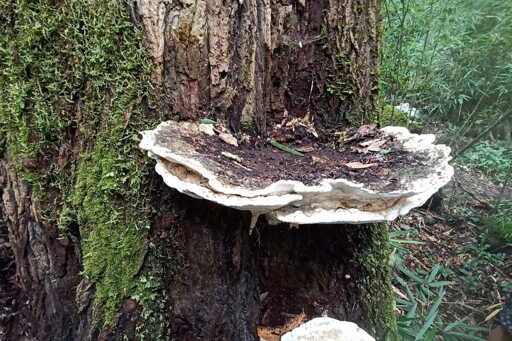From the forests of northeast India’s Arunachal Pradesh state, researchers have described a new-to-science species of fungus with “exceptionally large” fruiting bodies that can hold the weight of a person. The species is named Bridgeoporus kanadii in honor of Indian mycologist Kanad Das for his contributions to Indian macrofungi. The researchers led by Arvind Parihar, from the Botanical Survey of India (BSI), unexpectedly came upon the fungus during a survey of mushrooms in Arunachal Pradesh during the monsoon season, reports Mongabay’s Divya Kilikar. They found clusters of at least 40 fruiting bodies of an unfamiliar fungus growing on the trunks of coniferous trees, primarily old-growth fir trees (Abies spp.). What stood out was the sheer size of some of the fungal fruiting bodies: the largest was more than three meters (10 feet) in radius. “It is so large that I could sit on it, and it remained firmly attached to the tree,” Parihar said. Although new to science, B. kanadii is known to local community members, but they don’t harvest it as it’s inedible and not economically valuable, Parihar added. The researchers brought some of the fungi specimens back to dry and preserve. They then analyzed its morphology in detail, including its color, size, shape, thickness, length and width. They also sequenced the fungus’s DNA, compared it with recorded genetic data of other fungal species, and finally confirmed that it was indeed a new-to-science species of Bridgeoporus. There were previously only two other known species within the genus: B. nobilissimus,…This article was originally published on Mongabay
From Conservation news via this RSS feed


